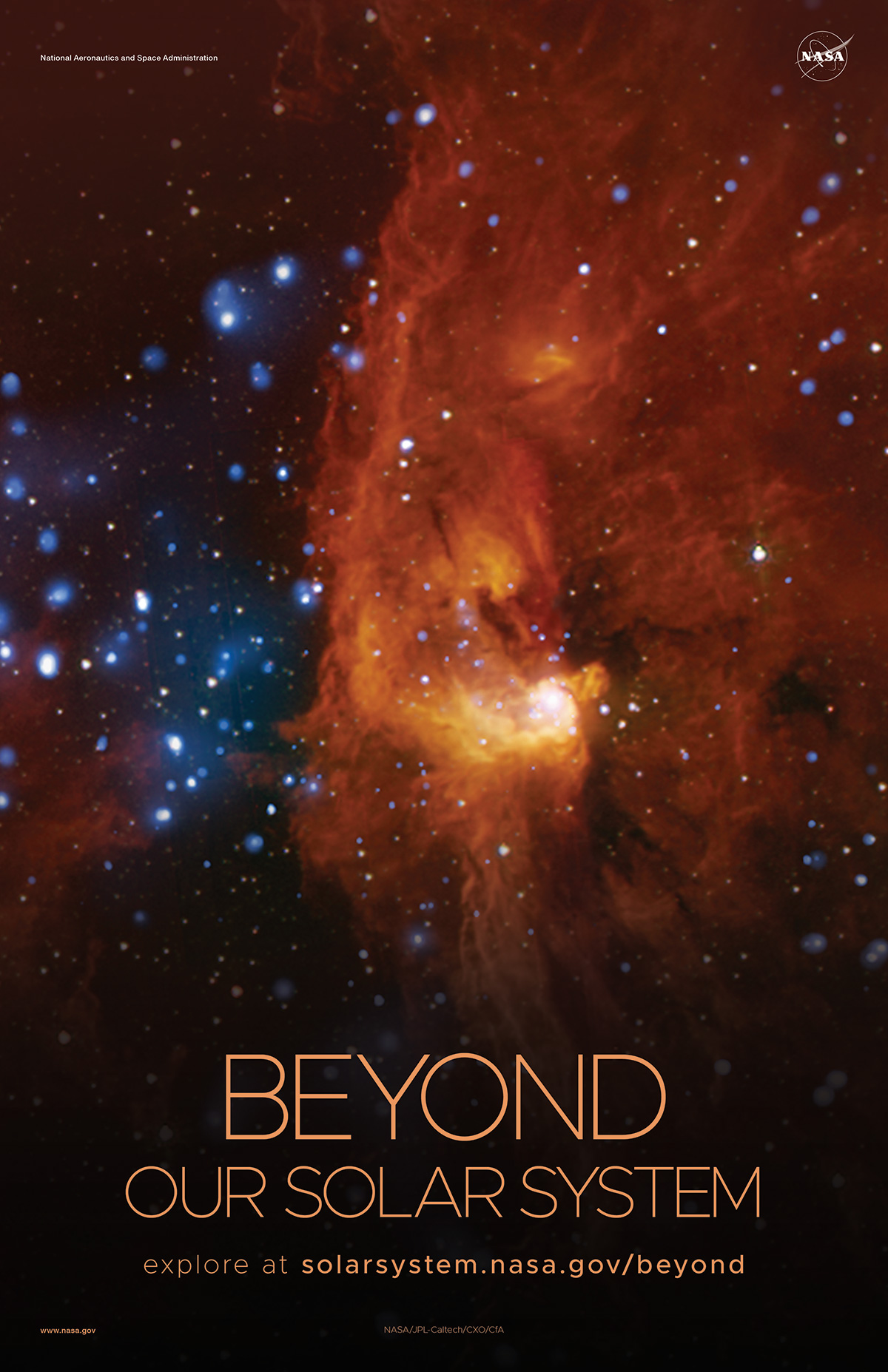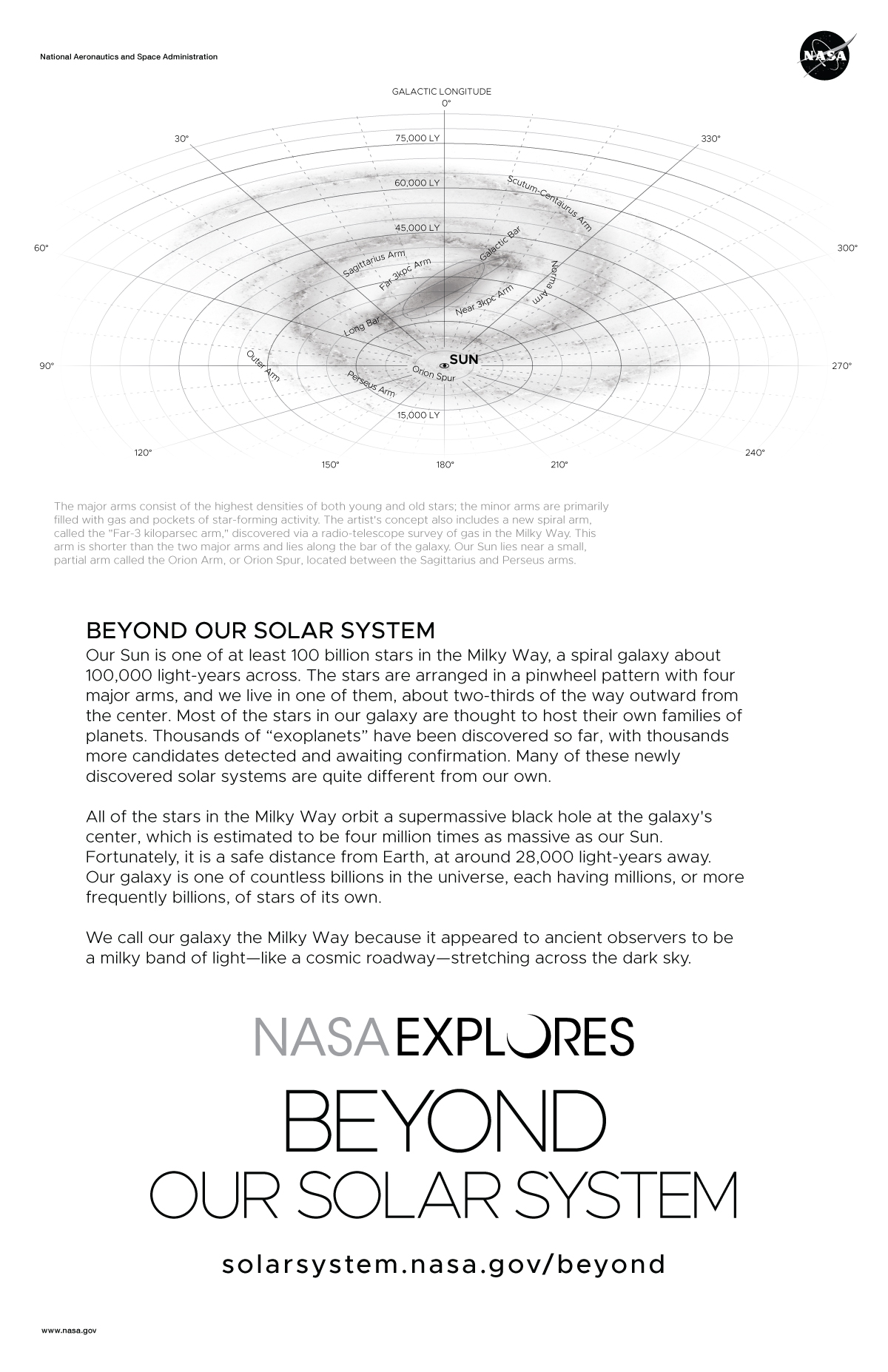Beyond Our Solar System Poster – Version E

| Credit | NASA |
|---|---|
| Language |
|
Version E of the beyond our solar system installment of our solar system poster series.
The posters are best printed on 11x17 paper. Several download options are available in the column on the right.
About the image: RCW 108 is a region where stars are actively forming within the Milky Way galaxy about 4,000 light years from Earth. This image is a composite of X-ray data from NASA's Chandra X-ray Observatory (blue) and infrared emission detected by NASA's Spitzer Space Telescope (red and orange). Credit: NASA/JPL-Caltech/CXO/CfA
On the Back
Our Sun is one of at least 100 billion stars in the Milky Way, a spiral galaxy about 100,000 light-years across.
The stars are arranged in a pinwheel pattern with four major arms, and we live in one of them, about two-thirds of the way outward from the center.
Most of the stars in our galaxy are thought to host their own families of planets. Thousands of “exoplanets” have been discovered so far, with thousands more candidates detected and awaiting confirmation. Many of these newly discovered solar systems are quite different from our own.

All of the stars in the Milky Way orbit a supermassive black hole at the galaxy's center, which is estimated to be four million times as massive as our Sun. Fortunately, it is a safe distance from Earth, at around 28,000 light-years away.
Our galaxy is one of countless billions in the universe, each having millions, or more frequently billions, of stars of its own.
We call our galaxy the Milky Way because it appeared to ancient observers to be a milky band of light – like a cosmic roadway – stretching across the dark sky.
Explore beyond our solar system: Explore at solarsystem.nasa.gov/beyond.
